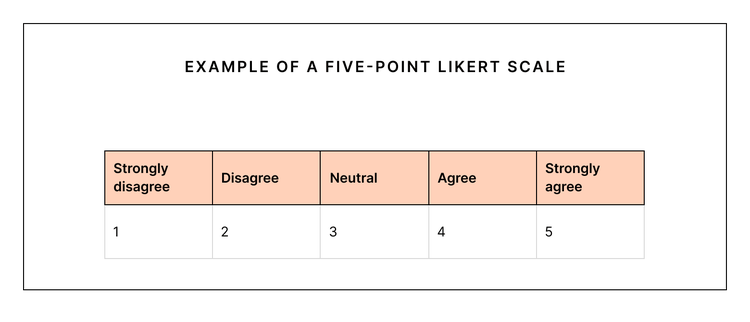
Double-barreled questions: What they are and how to avoid them

To gather valuable insights from your next workplace survey, pay close attention to how you formulate your questions. A clear, concise question is more likely to elicit straightforward and helpful feedback, while a poorly phrased question may confuse your employees.
The questions you ask can affect the accuracy of your data. Leading, ambiguous, and assumptive questions can all introduce bias and water down survey insights. You’ll also want to avoid asking double-barreled questions. This question type asks two or more questions at once, which can leave respondents unsure how to reply – and result in data that doesn’t represent employees’ true thoughts.
In this article, we’ll take a closer look at what double-barreled questions are and why it’s best to avoid them. We’ll also share examples and tips for creating clear, easy-to-answer questions for your next employee survey.
What is a double-barreled question?
A double-barreled question touches on two issues while only allowing the recipient to share one answer. For example: “Do you think we should focus on improving engagement and job satisfaction at our company?”
By bucketing these two topics together in one question, the respondent is forced to give an over-simplified answer that addresses both topics together rather than giving each topic the individual attention it deserves. Because of this, double-barreled questions can force employees to give answers they might not have otherwise given and skew the survey results.
To avoid confusing your survey respondents and collecting inaccurate data, break any double-barreled questions into two separate questions. For the example above, this might look like:
- Do you think we should focus on improving engagement at our company?
- Do you think we should focus on improving job satisfaction at our company?
This separation allows respondents to give their opinions on each topic individually, providing the surveyor with more accurate, direct, and useful feedback.
Why are double-barreled questions "bad"?
By asking two questions in one, double-barreled questions can create confusion. Let’s say you ask our earlier example in an employee survey: “Do you think we should focus on improving engagement and job satisfaction at our company?” If an employee answers “yes,” you have to assume that this respondent believes your business should improve both engagement and satisfaction equally.
In reality, this employee might think that engagement levels are fine, but that job satisfaction could be greatly improved. Rather than answering “no” to the double-barreled question above, the employee felt pressured to choose “yes,” as they want to see the business make an effort to increase job satisfaction.If your company takes employee answers at face value, you won’t be able to distinguish between the two issues. You might end up investing heavily in engagement when the real issue employees want solved is job satisfaction. Unclear insights like these could cause your business to collect and take action on inaccurate data.
TL;DR: Double-barreled questions can result in inaccurate data that costs your business unnecessary time, money, and resources. Using simple and direct questions in your surveys can reduce employee confusion, collect more targeted feedback, and gain actionable insights that benefit your organization.
Examples of double-barreled questions
Here are a few examples of how double-barreled questions might appear in workplace surveys. It’s worth familiarizing yourself with them so you can spare your employees the hassle of responding to these confusing queries.
1. How often do you receive recognition and feedback from your manager?
Recognition and feedback are two separate issues. A manager might regularly recognize the exceptional work of a direct report yet rarely share impactful feedback – or vice versa. By grouping these two topics together, a company would fail to collect accurate data on how frequently managers recognize and share feedback with their teams.
A better approach to this question is as simple as splitting the compound question into two separate ones:
- How often do you receive recognition from your manager?
- How often do you receive feedback from your manager?
Now, each question clearly measures just one topic, allowing your business to get clear insights into both workplace recognition and feedback.
2. How often do you have team meetings and find them productive?
Again, any responses to this question will likely result in unclear, unusable findings. While this team might be meeting weekly – which is important data for your company to have – an employee might only find these meetings productive once a month when the topics addressed are most relevant to their role. This might push the individual to reply “monthly” rather than “weekly,” making it look like your business needs to focus more on meeting frequency rather than meeting effectiveness.
To phrase this question in a way that’s less likely to skew employee responses, you could be more specific, like:
- How often do you have team meetings?
- How productive do you find your team meetings?
Another option is to ask employees to rate their agreement with certain statements, such as:
- I feel my team’s meetings are a good use of my time.
- I am satisfied with how frequently my team meets.
3. Are you happy with the professional growth opportunities at our company, or do you wish we offered more training programs to help you grow your skills?
Once again, this question groups two distinct topics together: growth opportunities and training programs. While related, these two topics are worth separating as employees may have different feedback to share about them. Here are some alternative ways to phrase this question using the Likert Scale:
- I have access to the learning and development I need to do my job well.
- This is a great company for me to make a contribution to my development.
- I’ve had a meaningful conversation with my manager about my career development in the past six months.

How to avoid double-barreled questions in employee surveys
Luckily, avoiding double-barreled questions isn’t hard. Here are a few tips to help you ensure your surveys only include questions that are easy to understand and answer.
-
Review your questions
First, take the time to review all of your questions before sending out your next employee survey. Even just a quick read-through can help you spot strange phrasing, misspellings, and any confusing double-barreled questions that could trip up your respondents. You may also want to enlist a colleague to help proofread your work in case you miss anything. Should you spot any double-barreled questions, try separating them into two unique questions so employees understand what you’re asking. -
Look out for “and” and “or”
While it’s not a foolproof formula, many double-barreled questions include “and” and “or.” As you review questions before your next survey launch, keep your eyes peeled for any inquiries, including these two words. You might discover such questions are better off split into two so the purpose of each question is crystal clear to your respondents. -
Align questions with your intent
Make sure you know the intention behind every question you include on an employee survey. Only ask questions that will give you insight into the employee experience at your company and allow you to collect actionable feedback so you can take steps to build a better workplace for your team. When reviewing your survey, consider whether each question will help give you the insights you need to understand your organization better and ultimately make meaningful changes.
It may help to think about how you’re asking each question. If you want to know which perks employees value most, consider asking them to rank each benefit you offer. If you want to understand engagement, try using Employee Engagement Index questions. Curious about diversity and inclusion? Ask questions about belonging, fairness, and representation. -
Use science-backed questions
When in doubt, turn to the experts. Culture Amp’s team of people scientists have carefully crafted science-backed questions for surveys on engagement, diversity and inclusion, manager effectiveness, and more. Each survey question included has a well-defined intention, helping you secure tangible insights into workplace factors like employee pride, commitment, and motivation.
The best part? When kept consistent, all of these questions are benchmarkable, allowing your business to use Culture Amp benchmarks to compare your results against those of other similar organizations.
Creating better employee surveys with Culture Amp
Crafting strong survey questions is easy with Culture Amp. Our people scientists are here to help you draft and select the best questions for your next survey so you can spend less time worrying about things like double-barreled questions and more time taking action on your findings.
With Culture Amp's employee engagement tool, you can access 30+ science-backed and customizable survey templates are ready to use, so you get the accurate data you need to understand employee engagement, DEI, onboarding, and more.

Get the most out of your employee surveys
Learn how your people are feeling, and leverage science-backed data and insights to take meaningful action.




